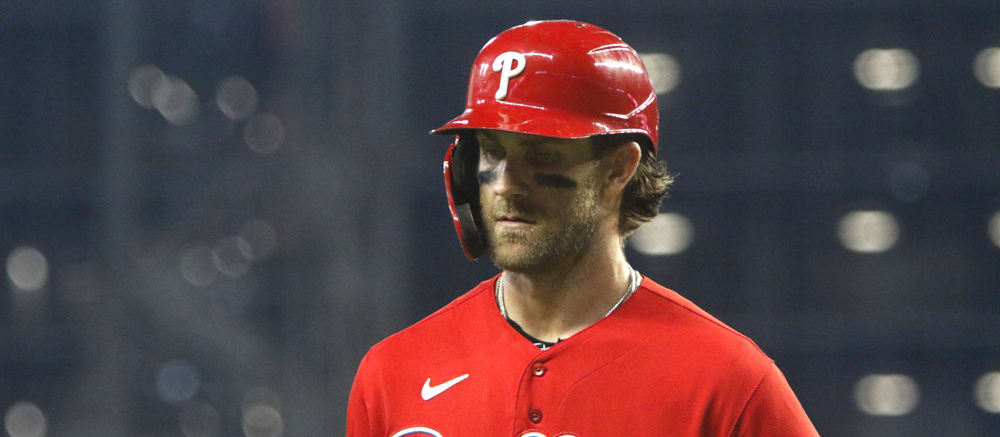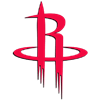Everything feels so much more real in the moment, but after taking a step back to see it all with a bit of perspective, we can get a much better picture of how things really stand. After typing that out, I'm realizing it probably fits best as advice to a 14-year-old going through their first breakup, but I'll leave it in nonetheless as it doubles as fantasy advice.
A couple times throughout the early weeks of this season, I've taken a look at how things stood at the same point last year, in an effort to provide that perspective and assess just how much we should make of some surprising early-season performances. While we're now well past the one-month mark of the season, that exercise still seems worth repeating, particularly when it comes to things like determining to what extent we should panic following a slow start and whether it's time to start thinking about an early sell-off in dynasty formats.
Just how much do things matter on May 16, the 40th day of the season? I took a look at how the baseball world looked on May 10, 2021, the 40th day of last year's campaign. High-profile notes from that day on this very website included one about Jarred Kelenic being on the verge of his MLB debut and another about how Jacob deGrom was expected to avoid the injured list. Welp.
Looking at the MLB standings from that day tells a similar story. Just six of the 10
Everything feels so much more real in the moment, but after taking a step back to see it all with a bit of perspective, we can get a much better picture of how things really stand. After typing that out, I'm realizing it probably fits best as advice to a 14-year-old going through their first breakup, but I'll leave it in nonetheless as it doubles as fantasy advice.
A couple times throughout the early weeks of this season, I've taken a look at how things stood at the same point last year, in an effort to provide that perspective and assess just how much we should make of some surprising early-season performances. While we're now well past the one-month mark of the season, that exercise still seems worth repeating, particularly when it comes to things like determining to what extent we should panic following a slow start and whether it's time to start thinking about an early sell-off in dynasty formats.
Just how much do things matter on May 16, the 40th day of the season? I took a look at how the baseball world looked on May 10, 2021, the 40th day of last year's campaign. High-profile notes from that day on this very website included one about Jarred Kelenic being on the verge of his MLB debut and another about how Jacob deGrom was expected to avoid the injured list. Welp.
Looking at the MLB standings from that day tells a similar story. Just six of the 10 eventual playoff teams would have been in the field had the season ended at that point. Both World Series participants, the Braves and Astros, would have been on the outside looking in, as would the Astros and Dodgers, while the Guardians, Athletics, Mets and Padres would have been part of the field. Of course, you could also spin those standings another way, noting that the surprising Giants were already tied for the best record in the National League. If you bought into their hot start and expected it to continue, you actually would have been right.
Taking things one step further, I was curious how many of the hottest individual starts last year were maintained throughout the season. The following table shows how many players who were in the Top 10 of each standard fantasy category on May 10 of last year remained in the Top 10 at season's end:
| Category | Players in both May 10th Top-10 and year-end Top-10 | Players |
|---|---|---|
| AVG | 1 | Yuli Gurriel |
| HR | 2 | Shohei Ohtani, Fernando Tatis |
| R | 2 | Bo Bichette, Vladimir Guerrero |
| RBI | 2 | Jose Abreu, Rafael Devers |
| SB | 5 | Bo Bichette, Whit Merrifield, Shohei Ohtani, Fernando Tatis, Trea Turner |
| ERA | 3 | Kevin Gausman, Marcus Stroman, Brandon Woodruff |
| K | 3 | Gerrit Cole, Aaron Nola, Max Scherzer |
| S | 6 | Aroldis Chapman, Josh Hader, Jake McGee, Mark Melancon, Alex Reyes, Will Smith |
| W | 3 | Gerrit Cole, Steven Matz, Julio Urias |
| WHIP | 4 | Gerrit Cole, Kevin Gausman, Max Scherzer, Brandon Woodruff |
| Total | 31 |
What lessons can we take from this admittedly brief study? The primary one seems to be that it is indeed still early. Over two-thirds of the available year-end Top 10 spots changed between the 40th day of the regular season and the end of the year, including 76 percent of the available hitting spots and 62 percent of the available pitching spots. Saves and steals, the two categories for which fantasy players typically have to make specific game plans, both saw at least half their leaders remain near the top of the board, but the other eight categories all had plenty of turnover.
Another thing to note on the above table is that very few of the names in the column to the right represented true breakouts. The vast majority of them were players who were expected to be great and were great all year. Ohtani is the notable exception, though whether he truly fits is arguable. He was known to be talented, but he just wasn't particularly trustworthy given his injury history and poor 2020 campaign.
So what does that all mean? Mostly that we shouldn't worry too much if our starts were slower than expected. Yes, the games played so far definitely still matter, but there's a ton still to play for and plenty of ground to be made up by fantasy players who continue to manage carefully throughout the long summer months. Many players who will be seen as league winners come season's end haven't produced particularly notable numbers yet. Keep the faith and keep improving your rosters, perhaps with some of the players discussed below.
RISERS
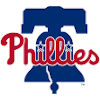 Bryce Harper, OF, Phillies: I received an amusing pair of notifications on my phone Thursday. The first read that Harper had a small tear in his UCL. Before I had the chance to finish figuring out how much time the injury would cost the reigning MVP, I received another one: he'd just homered to open the scoring in a 9-7 win over the Dodgers. Apparently, when you're this good, you don't even need two functioning elbows to hit .305/.361/.634. While it's certainly nerve-wracking to roster a player who's known to have this sort of injury, both he and the Phillies are evidently confident that he can keep playing, albeit with him limited to the designated hitter spot. He certainly hasn't hit like he needs any time off, as he's slashed an absurd .500/.537/1.111 over his last nine games, homering five times. He received a PRP injection on Sunday, and the possibility that he aggravates the issue can't be ignored, but it's even harder to ignore how well he's been hitting the ball.
Bryce Harper, OF, Phillies: I received an amusing pair of notifications on my phone Thursday. The first read that Harper had a small tear in his UCL. Before I had the chance to finish figuring out how much time the injury would cost the reigning MVP, I received another one: he'd just homered to open the scoring in a 9-7 win over the Dodgers. Apparently, when you're this good, you don't even need two functioning elbows to hit .305/.361/.634. While it's certainly nerve-wracking to roster a player who's known to have this sort of injury, both he and the Phillies are evidently confident that he can keep playing, albeit with him limited to the designated hitter spot. He certainly hasn't hit like he needs any time off, as he's slashed an absurd .500/.537/1.111 over his last nine games, homering five times. He received a PRP injection on Sunday, and the possibility that he aggravates the issue can't be ignored, but it's even harder to ignore how well he's been hitting the ball.
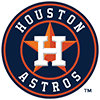 Kyle Tucker, OF, Astros: Tucker seems to be earning the "slow starter" label. He posted a 57 wRC+ across his first 33 games last year before cruising to a 174 wRC+ the rest of the way. He got on track earlier this season, posting a miserable wRC+ of 22 across his first 13 games before hitting .361/.460/.583 over his next 21, good for a wRC+ of 212. On the season as a whole, he's now hitting .254/.360/.441, with his .306 xBA and .568 xSLG suggesting his numbers could still rise a fair amount further. His appeal during draft season was based on the assumption that he'd be a very strong bat who also stole a fair amount of bases, though his eight steals this year tie him for third in the league and are already more than halfway to his total of 14 from last season. He's still hitting frustratingly low in the order, but he did at least climb up to the fifth spot in his last three games and could climb further if he keeps hitting.
Kyle Tucker, OF, Astros: Tucker seems to be earning the "slow starter" label. He posted a 57 wRC+ across his first 33 games last year before cruising to a 174 wRC+ the rest of the way. He got on track earlier this season, posting a miserable wRC+ of 22 across his first 13 games before hitting .361/.460/.583 over his next 21, good for a wRC+ of 212. On the season as a whole, he's now hitting .254/.360/.441, with his .306 xBA and .568 xSLG suggesting his numbers could still rise a fair amount further. His appeal during draft season was based on the assumption that he'd be a very strong bat who also stole a fair amount of bases, though his eight steals this year tie him for third in the league and are already more than halfway to his total of 14 from last season. He's still hitting frustratingly low in the order, but he did at least climb up to the fifth spot in his last three games and could climb further if he keeps hitting.
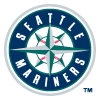 George Kirby, SP, Mariners: Kirby is the second starter Seattle has called up straight from Double-A this season, but if you were burned by the Matt Brash hype, don't let that scare you off Kirby. While Brash came with major concerns about his control and was sent down after posting a 7.65 ERA and 17.9 percent walk rate in five starts, Kirby's entire profile is driven by his excellent command. Throughout his minor-league career, he's walked just 4.4 percent of opposing batters, a number that looks even better next to his 30.0 percent strikeout rate. He burst onto the scene with seven strikeouts and no walks in six shutout innings against the Rays last Sunday, and while he was far less impressive his next time out against the Mets, his outlook remains very favorable going forward. It's rare to find a pitcher with this kind of control so early in his career, and when you combine that with a fastball that's averaged 96.0 mph, the ceiling is quite high.
George Kirby, SP, Mariners: Kirby is the second starter Seattle has called up straight from Double-A this season, but if you were burned by the Matt Brash hype, don't let that scare you off Kirby. While Brash came with major concerns about his control and was sent down after posting a 7.65 ERA and 17.9 percent walk rate in five starts, Kirby's entire profile is driven by his excellent command. Throughout his minor-league career, he's walked just 4.4 percent of opposing batters, a number that looks even better next to his 30.0 percent strikeout rate. He burst onto the scene with seven strikeouts and no walks in six shutout innings against the Rays last Sunday, and while he was far less impressive his next time out against the Mets, his outlook remains very favorable going forward. It's rare to find a pitcher with this kind of control so early in his career, and when you combine that with a fastball that's averaged 96.0 mph, the ceiling is quite high.
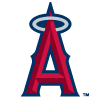 Reid Detmers, SP, Angels: Detmers struggled to a 7.40 ERA and 6.36 FIP in his five-start debut last year, but he was a popular sleeper nonetheless over the winter as drafters were willing to write those numbers off given that he'd made a grand total of just 14 minor-league starts. After throwing a no-hitter against the Rays on Tuesday, the lone individual no-hitter out of the three we've seen so far this year, that sleeper buzz appears justified. Of course, that's a simplistic analysis, and the extent to which we should truly get excited about Detmers is unclear. Last year's list of no-hitter hurlers included Tyler Gilbert, Spencer Turnbull and Wade Miley, after all. Detmers' no-hitter came with just two strikeouts, lowering his strikeout rate to 16.8 percent on the year, though it did slash his ERA from 5.32 to 3.77. It's perhaps most accurate to say that the outing showcased Detmers' potential in some ways, but also that he's far from a finished product, so if anyone out there tries to blow you away with an offer, it might be a great time to sell high.
Reid Detmers, SP, Angels: Detmers struggled to a 7.40 ERA and 6.36 FIP in his five-start debut last year, but he was a popular sleeper nonetheless over the winter as drafters were willing to write those numbers off given that he'd made a grand total of just 14 minor-league starts. After throwing a no-hitter against the Rays on Tuesday, the lone individual no-hitter out of the three we've seen so far this year, that sleeper buzz appears justified. Of course, that's a simplistic analysis, and the extent to which we should truly get excited about Detmers is unclear. Last year's list of no-hitter hurlers included Tyler Gilbert, Spencer Turnbull and Wade Miley, after all. Detmers' no-hitter came with just two strikeouts, lowering his strikeout rate to 16.8 percent on the year, though it did slash his ERA from 5.32 to 3.77. It's perhaps most accurate to say that the outing showcased Detmers' potential in some ways, but also that he's far from a finished product, so if anyone out there tries to blow you away with an offer, it might be a great time to sell high.
 Juan Yepez, 1B/OF, Cardinals: Yepez missed out on a spot on the Opening Day roster in part due to the Cardinals' decision to bring back Albert Pujols, but it didn't take long for him to earn his opportunities. After posting a .974 OPS in 22 games for Triple-A Memphis, he was called up in early May and performed even better, hitting .366/.435/.585 with a pair of homers in his first 11 games. Perhaps even more encouragingly, he's been in the lineup for every single game since his promotion, starting six times in the corner outfield and five times as the designated hitter. If not for the disappointing starts for Tyler O'Neill (.561 OPS) and Dylan Carlson (.610 OPS), Yepez would probably have a tougher path to playing time, as his natural position of first base is occupied by Paul Goldschmidt. Yepez projects for big power and should hit enough to be a difference-maker despite poor defense, as his strong early slash line is backed by a good combination of a 9.1 percent barrel rate and 17.5 percent strikeout rate.
Juan Yepez, 1B/OF, Cardinals: Yepez missed out on a spot on the Opening Day roster in part due to the Cardinals' decision to bring back Albert Pujols, but it didn't take long for him to earn his opportunities. After posting a .974 OPS in 22 games for Triple-A Memphis, he was called up in early May and performed even better, hitting .366/.435/.585 with a pair of homers in his first 11 games. Perhaps even more encouragingly, he's been in the lineup for every single game since his promotion, starting six times in the corner outfield and five times as the designated hitter. If not for the disappointing starts for Tyler O'Neill (.561 OPS) and Dylan Carlson (.610 OPS), Yepez would probably have a tougher path to playing time, as his natural position of first base is occupied by Paul Goldschmidt. Yepez projects for big power and should hit enough to be a difference-maker despite poor defense, as his strong early slash line is backed by a good combination of a 9.1 percent barrel rate and 17.5 percent strikeout rate.
 Brandon Drury, 2B/3B/OF, Reds: The lone bright side of seasons that have gone as poorly as the 9-26 Reds' year has gone thus far is that they create opportunities for unheralded players to emerge. Drury was a forgettable utility man for the first seven seasons of his career, slashing .249/.296/.415 while appearing everywhere but catcher and center field. Through 30 games this season, he's slashing .250/.325/.529 with seven homers. Surprisingly, that performance has been backed up by his expected stats, with his .257 xBA and .533 xSLG suggesting he's deserved every bit of his excellent results. After posting a 6.4 percent barrel rate through the end of last year, he suddenly has a 15.6 percent barrel rate this season, good for 15th among qualified hitters, one spot behind J.D. Martinez. Even if Drury's numbers are supported thus far, he'll likely fall back towards his career norms eventually, but the struggling Reds offer plenty of playing time in a very hitter-friendly park, which should keep him interesting even then.
Brandon Drury, 2B/3B/OF, Reds: The lone bright side of seasons that have gone as poorly as the 9-26 Reds' year has gone thus far is that they create opportunities for unheralded players to emerge. Drury was a forgettable utility man for the first seven seasons of his career, slashing .249/.296/.415 while appearing everywhere but catcher and center field. Through 30 games this season, he's slashing .250/.325/.529 with seven homers. Surprisingly, that performance has been backed up by his expected stats, with his .257 xBA and .533 xSLG suggesting he's deserved every bit of his excellent results. After posting a 6.4 percent barrel rate through the end of last year, he suddenly has a 15.6 percent barrel rate this season, good for 15th among qualified hitters, one spot behind J.D. Martinez. Even if Drury's numbers are supported thus far, he'll likely fall back towards his career norms eventually, but the struggling Reds offer plenty of playing time in a very hitter-friendly park, which should keep him interesting even then.
FALLERS
 Jarred Kelenic, OF, Mariners: Anybody feeling a bit of déjà vu? Kelenic arrived with plenty of fanfare last May before being demoted after hitting .096/.185/.193 in his first 23 games. He returned after the All-Star break and was better but still not particularly good, hitting .209/.291/.402. Despite those struggles, he again had plenty of hype heading into this year, finishing draft season with an NFBC average draft position of 143. He's lasted a bit longer this time around but was demoted after hitting .140/.219/.291 across 30 games. In a particularly worrisome development, his already poor 28.1 percent strikeout rate from last season has taken a significant step in the wrong direction, coming in at 37.5 percent. There's still plenty to like in his profile, as he's barreled 9.9 percent of the balls he's hit in his career and has 10 steals in 123 major-league games to go with his 17 homers. The foundation of a true power/speed asset is there, but he'll have to raise his batting average significantly from his .173 career mark to earn regular playing time.
Jarred Kelenic, OF, Mariners: Anybody feeling a bit of déjà vu? Kelenic arrived with plenty of fanfare last May before being demoted after hitting .096/.185/.193 in his first 23 games. He returned after the All-Star break and was better but still not particularly good, hitting .209/.291/.402. Despite those struggles, he again had plenty of hype heading into this year, finishing draft season with an NFBC average draft position of 143. He's lasted a bit longer this time around but was demoted after hitting .140/.219/.291 across 30 games. In a particularly worrisome development, his already poor 28.1 percent strikeout rate from last season has taken a significant step in the wrong direction, coming in at 37.5 percent. There's still plenty to like in his profile, as he's barreled 9.9 percent of the balls he's hit in his career and has 10 steals in 123 major-league games to go with his 17 homers. The foundation of a true power/speed asset is there, but he'll have to raise his batting average significantly from his .173 career mark to earn regular playing time.
 Spencer Torkelson, 1B, Tigers: It's not hard to make the case that Torkelson, like Kelenic, may need a demotion to sort things out in the minors. The 2020 first-overall pick generated plenty of excitement when he made the Tigers' Opening Day roster, but he couldn't have fallen much flatter than he has through his first 32 games at the highest level, as he's hitting .153/.278/.255 with three homers. The most worrying sign is his 31.3 percent strikeout rate, as Torkelson wasn't expected to have contact issues after striking out just 21.5 percent of the time in the minors. The rest of his game appears to be in order, as his 13.0 percent walk rate is excellent and his 8.1 percent barrel rate is acceptable, but he needs to make far more contact to live up to the standards of a major-league first baseman. Things haven't shown signs of improving lately, however, as he's gone hitless in 11 of his last 13 games, so it may be only a matter of time before he retreats to the minors if he can't reverse that trend soon.
Spencer Torkelson, 1B, Tigers: It's not hard to make the case that Torkelson, like Kelenic, may need a demotion to sort things out in the minors. The 2020 first-overall pick generated plenty of excitement when he made the Tigers' Opening Day roster, but he couldn't have fallen much flatter than he has through his first 32 games at the highest level, as he's hitting .153/.278/.255 with three homers. The most worrying sign is his 31.3 percent strikeout rate, as Torkelson wasn't expected to have contact issues after striking out just 21.5 percent of the time in the minors. The rest of his game appears to be in order, as his 13.0 percent walk rate is excellent and his 8.1 percent barrel rate is acceptable, but he needs to make far more contact to live up to the standards of a major-league first baseman. Things haven't shown signs of improving lately, however, as he's gone hitless in 11 of his last 13 games, so it may be only a matter of time before he retreats to the minors if he can't reverse that trend soon.
 Nathaniel Lowe, 1B, Rangers: Lowe started the season hot, hitting .412/.455/.529 over his first 13 games. That streak came with a clearly unsustainable .476 BABIP, though his .108/.171/.123 line over his last 18 contests represents far more than regression. He struck out just 14.5 percent of the time over the former stretch but has seen his strikeout rate jump to 30.0 percent over his recent slump. Lowe needs to make a lot of contact to be a productive bat, as he hasn't shown that he can be a reliable power hitter. He may need a swing change if that's ever going to happen, as his 6.5 degree average launch angle for his career just isn't going to translate to many homers. He's also had strikeout issues throughout his career, whiffing 26.6 percent of the time across his four major-league seasons, so it's tough to buy into him as a good contact hitter, either. He's at least generally hit the ball hard (albeit not during this latest slump), but without getting it in the air more often he may be nothing other than an Eric Hosmer type but with more strikeouts.
Nathaniel Lowe, 1B, Rangers: Lowe started the season hot, hitting .412/.455/.529 over his first 13 games. That streak came with a clearly unsustainable .476 BABIP, though his .108/.171/.123 line over his last 18 contests represents far more than regression. He struck out just 14.5 percent of the time over the former stretch but has seen his strikeout rate jump to 30.0 percent over his recent slump. Lowe needs to make a lot of contact to be a productive bat, as he hasn't shown that he can be a reliable power hitter. He may need a swing change if that's ever going to happen, as his 6.5 degree average launch angle for his career just isn't going to translate to many homers. He's also had strikeout issues throughout his career, whiffing 26.6 percent of the time across his four major-league seasons, so it's tough to buy into him as a good contact hitter, either. He's at least generally hit the ball hard (albeit not during this latest slump), but without getting it in the air more often he may be nothing other than an Eric Hosmer type but with more strikeouts.
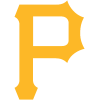 Mitch Keller, SP, Pirates: Sure, maybe Keller can't truly be called a "faller" after he posted a 6.17 ERA in 2021, but I thought it was worth checking in on him after he generated some buzz over the winter with reports of increased velocity. That velocity has indeed arrived, as he's averaging 96.2 mph on his fastball after sitting at 93.9 mph last year, but it hasn't had the desired impact on his results. After giving up five runs in fewer than five innings in both of his last two starts, his ERA now sits at 6.61 through seven outings. He's also managed a career-low 17.6 percent strikeout rate. It hasn't been all bad, as he's cut his walk rate to 8.1 percent and owns a career-high 47.2 percent groundball rate, but it seems safe to say at this point that if you picked him up due to his added velocity, you can give up on him if you haven't already.
Mitch Keller, SP, Pirates: Sure, maybe Keller can't truly be called a "faller" after he posted a 6.17 ERA in 2021, but I thought it was worth checking in on him after he generated some buzz over the winter with reports of increased velocity. That velocity has indeed arrived, as he's averaging 96.2 mph on his fastball after sitting at 93.9 mph last year, but it hasn't had the desired impact on his results. After giving up five runs in fewer than five innings in both of his last two starts, his ERA now sits at 6.61 through seven outings. He's also managed a career-low 17.6 percent strikeout rate. It hasn't been all bad, as he's cut his walk rate to 8.1 percent and owns a career-high 47.2 percent groundball rate, but it seems safe to say at this point that if you picked him up due to his added velocity, you can give up on him if you haven't already.


